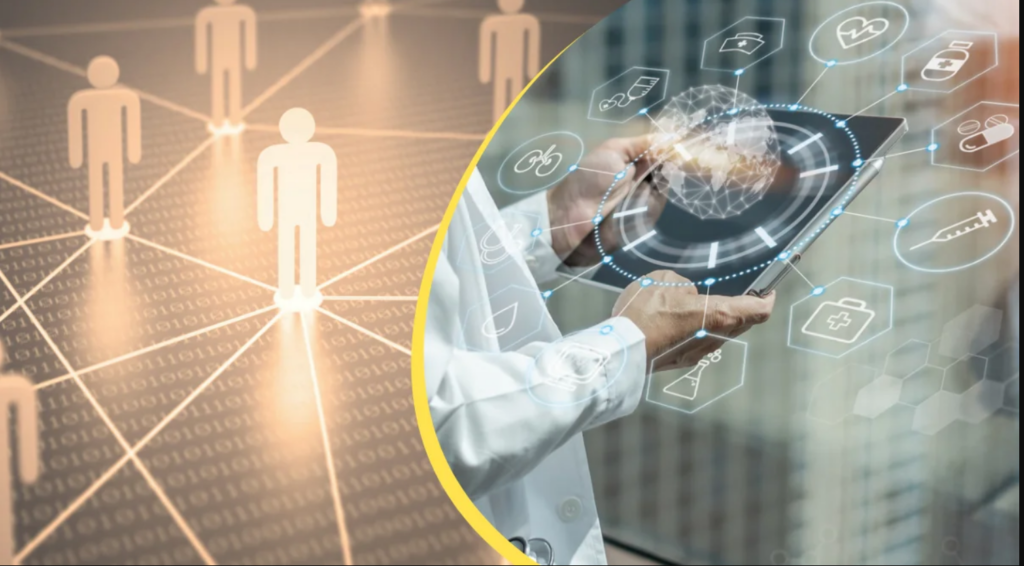In an era where technology is revolutionizing every aspect of our lives, healthcare is undergoing
a significant transformation through digital interfaces. The Unified Health Interface (UHI),
envisioned as the healthcare counterpart to the Unified Payments Interface (UPI), is set to
redefine the way healthcare services are delivered and accessed. UHI has the potential to
shape the future of medicinal practices in profound ways by enabling seamless and
interoperable communication between patients, providers, and other stakeholders.
What is UHI?
UHI is a digital framework designed to integrate various healthcare services into a single
platform. It works as an open, interoperable network, allowing patients to access a wide range
of services—from teleconsultations to diagnostics and digital prescriptions—through a single
interface. Modeled after the success of UPI in the financial sector, UHI aims to democratize
healthcare by making it more accessible, affordable, and efficient.
Key Benefits of UHI in Future Medicinal Practices
1. Streamlined Access to Healthcare Services
One of the primary advantages of UHI is the simplification of access to healthcare. Patients can
connect with doctors, book appointments, order medicines, and access diagnostic services
without navigating through multiple platforms. This integrated approach reduces the
fragmentation in the current healthcare ecosystem, ensuring a smoother patient experience.
2. Enhanced Telemedicine Capabilities
Telemedicine has seen exponential growth in recent years, and UHI will further enhance its
potential. By standardizing digital interactions between patients and healthcare providers, UHI
ensures secure, reliable, and efficient teleconsultations. Patients in remote areas can easily
access quality medical advice, bridging the urban-rural healthcare divide.
3. Interoperability and Data Integration
UHI’s interoperable framework facilitates the seamless exchange of medical records and data
across healthcare providers. With patient consent, medical histories, diagnostic results, and
treatment plans can be shared securely among different stakeholders. This not only enhances
diagnostic accuracy but also reduces redundancy in testing and treatments.
4. Personalized Medicine and AI Integration
As UHI enables the aggregation of vast amounts of healthcare data, it opens the door to
advanced analytics and artificial intelligence (AI). Personalized medicine, which tailors
treatments based on individual patient profiles, will benefit immensely from the insights derived
from such data. AI-driven tools can predict health risks, suggest preventive measures, and
support clinical decision-making, making treatments more effective.
5. Cost Efficiency
By reducing redundancies and streamlining processes, UHI can lower the overall cost of
healthcare. Patients will save on unnecessary tests and consultations, while providers can
optimize their resources. This cost efficiency makes healthcare more affordable and sustainable
in the long run.
6. Improved Health Monitoring
UHI can integrate wearable devices and remote monitoring tools, enabling continuous tracking
of patient health. Chronic conditions like diabetes, hypertension, and cardiovascular diseases
can be monitored more effectively, allowing timely interventions and better disease
management.
7. Empowered Patients
With UHI, patients gain greater control over their healthcare journey. They can access their
medical records, compare healthcare providers, and make informed decisions about their
treatments. This transparency fosters trust and encourages patient engagement.
Challenges and the Way Forward
While UHI holds wide scope, its implementation comes with challenges. Ensuring data privacy
and security is paramount, as sensitive health information will be exchanged digitally.
Standardizing protocols across diverse healthcare providers and systems is another critical
hurdle. Additionally, educating stakeholders—from patients to providers—about the benefits and
usage of UHI will require sustained effort.
The government and private players must collaborate to build a robust infrastructure that
supports the seamless functioning of UHI. Investments in cybersecurity, digital literacy, and
healthcare innovation will be essential to realize its full potential.
Conclusion
The Unified Health Interface is poised to be a game-changer in healthcare ecosystem. By
integrating technology with medicinal practices, UHI promises to make healthcare more
accessible, personalized,user-friendly and efficient. As it evolves, UHI has the potential to not
only address the existing gaps in the healthcare system but also pave the way for innovative
solutions that redefine the future of medicine. Embracing this digital revolution will ensure that
quality healthcare becomes a universal reality for everyone.

